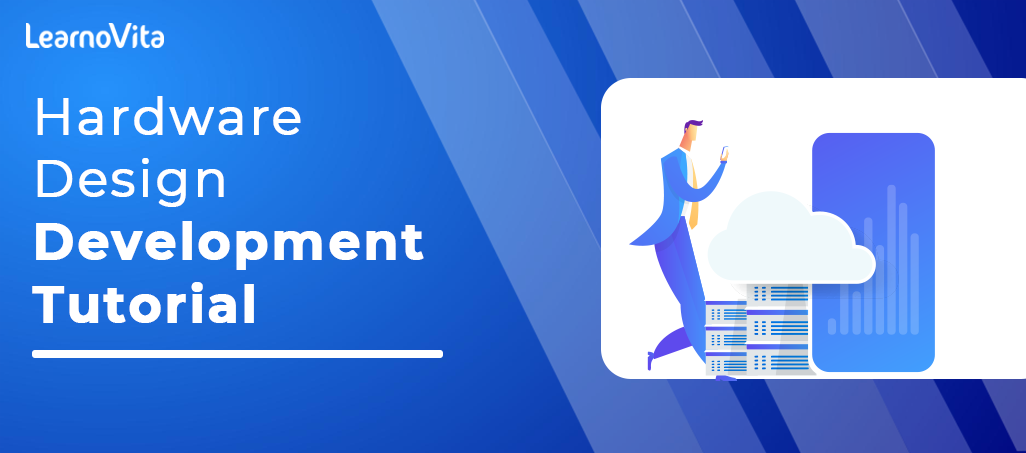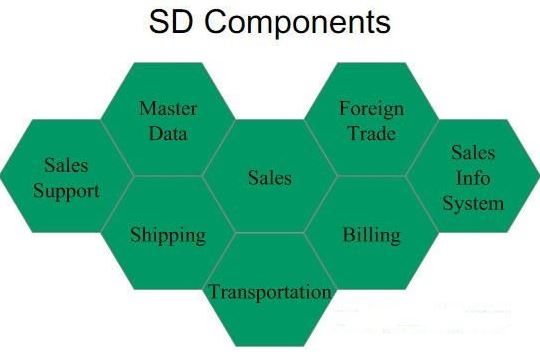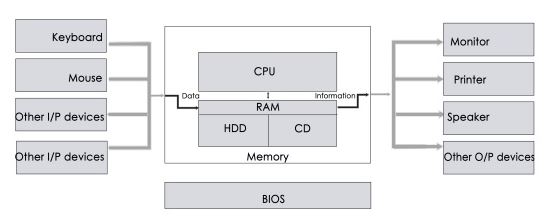
Hardware Design Development Tutorial | A Complete Guide
Last updated on 11th Aug 2022, Blog, Embedded System, Tutorials
Introduction to Hardware Design Development:
The Hardware Design Document (HDD) depicts the various equipment parts utilized in the Comprehensive Test Ban Treaty (CTBT) Infra sound Prototype and their interrelationships.
It partitions an infra sound model into equipment of setups things (HWCIs).
Equipment plan, obviously, is high compelled than programming by the actual world.
It is enlightening to analyze the reflections that has worked for equipment, like simultaneous plan.
The coordinated deliberation is commonly installed programming With regards to the Technology:
Equipment models are ordinarily developed utilizing an equipment portrayal dialects such Verilog and VHDL; these dialects understand a discrete-occasion model of evaluation that made time a five star idea, data shared by all the parts.
Simultaneous plan is done through the adapted utilization of these dialects.
Discrete-occasion models are regularly utilized for displaying difficult frameworks.
Especially with a regards to the systems administration, yet have not been sent into implanted a framework plan.
Theoretically, the differentiation among an equipment and programming, according to the viewpoint of evaluation, has just to do with the level of simultaneousness and the job time.
An application with a lot of similar and a weighty worldly substance should be considered utilizing an equipment reflections, paying small heed to how it is carried out.
An application that is successive and has no transient conducted that should be considered utilizing programming reflections, paying small mind to how it is executed.
The key problem becomes one of recognized the proper deliberations for an addressing the plan.
Key Components in SAP SD

Framework head control plane connection point:
The point of interaction an uncovered by the organization framework to the framework manager gives a way to the framework to be assembled and to be set up at first.
General associations are across this connection point include:
Name a some electronic devices that are used in hardware design development?
These are :
- 1. Capacitors
- 2. Inductors
- 3. Transformers
- 4. Diodes
- 5. Relays
- 6. Transistors
There are specific factors that play a significant role.
A few of them are:
- 1. Accuracy
- 2. Precision
- 3. Performance
- 4. Reliability
- 5. Compatibility
Major design and development factors:
The fact is the demand of people or users are frequently modifying.
Therefore it is need to pay attention to few important factors to keep up the pace when it comes to a developing or designing any hardware that works reliably.
A some of them are:
- 1. Safety
- 2. Accuracy
- 3. Response time
- 4. Bandwidth
- 5. Testability
- 6. Size and Weight
- 7. Mean time between failure
- 8. Prototype time
Architecture:
Taking the equipment plan that measures thusly, think about a portion of the pertinent variables in a beginning with a plan, expecting a settled on introductory of determination.
It is valuable to realise how much adaptability is permitted in collecting the specific, in light of the fact that an unbalanced expense may be involved.
It could be an adequate to decrease the exhibition to lessen costs, for instance, diminishing the accuracy of easy estimations or the recurrence scope of a sign result.
The expense of the microcontroller will in common increment with the quantity of I/O pins, so it is more t likely smart to search for ways of lessening the pin count.
One model segments is to utilize a sequential LCD rather than an equal one.
The sequential kind need just 1 result, while the equal LCD seen before needs 7, or perhaps 11 if 8-bit data are utilized.
Surely the sequential point of interaction ought to be displayed as the default decision, and an equal utilized provided that more velocity admittance to the presentation is required.
The sequential connection can likewise be an actually a longer.
Sequential access sensors are turning out to more normal, where the data are shipped off the MCU in a sequential structure, rather than as a simple sign.
Any pin can be utilized as a RS232 port, CCS C gives a driver that produces the important connection point absolutely in the programming.
This implies committed easy ports may not be important, giving more prominent adaptability in the decision of a MCU.
Then again, the sensor is probably going to be most costly.
Program memory limit a prerequisites are complex to expect before the product has been settled.
C projects by and more need more memory than constructing agent, so the decision of language is a significant.
This element is thought of as further later, for the time being, at the very less memory necessities grow faster with program intricacy.
As respects RAM necessities, the PIC is completely restricted, as the just an installed RAM comprises of an extra record registers.
Outside information memory likely could be more important, as in information lumberjack.
An elective sort of MCU could even be more important for data a escalated applications.
The PIC scores well on the working pace, be that as it may.
The 16 series gadgets can generally run at 20 MHz, with the 18 and 24 series running at 40 MHz.
The clock speed influences the power of utilization, as the current consumed is relative to an exchanging rate in CMOS gadgets.
Low-power MCUs are a continuous advancement in microchip an innovation.
Diminished working voltages (e.g., 3.3-V inventory) are added progressively used to reduce power scattering.
Power utilization is not one of the working boundaries typically an anticipated by recreation, so a genuine equipment model might an expected to at long last indicate the power supply.
Categories of tasks in a hardware design and development:
- 1. Sequential
- 2. Conditional
- 3. Iterative
- 4. Interrupt
Soldering and De-soldering in hardware design:
Any hardware is a combination of different small components that need to be integrated with each other.
Soldering is a procedure that is used to connect one component with the another manually with the help of the soldering gun.
This approach is considered when some customization is needed in hardware.
On the other side eliminate these components from each other or from a PCB i.e. Printed circuit board where they are fabricated is known as De-soldering.
Power utilization is much basic in battery fueled frameworks.
Hardware and Software Engine Machine Design:

Survey methods for the design of an embedded system’s hardware and the software.
Do not yet entirely understand how to jointly design the hardware and software for an embedded applications.
Most work has concentrated on the design of either the hardware or software, using a very easy model for the other.
Recent work on hardware-software partitioning takes a large balanced view of the 2 elements, but existing algorithms still rely on a restricted architectures for both the hardware and software components.
Methodologies and algorithms for truly common hardware-software co-design of an embedded systems are a primary goal of research in this area.
As a result, explain both previous work in codesign proper and also related to work in distributed system design, which take the hardware engine as a given and designs a software architecture.
Software Program means the software program used by the Fund for providing Fund and account balance data including net asset value per share.
Such Program may contain the Lion System.
In situations where the Lion System or any other Software Program used by the Fund is not available, such data may be provided by telephone.
The Lion System shall be provided to an Insurance Company at no charge.
Related to “Hardware Design “
- 1. Server Software
- 2. System Software
- 3. Application Software
- 4. Supported Software
- 5. Systems Software
- 6. Developed Software
- 7. Licensed Software
- 8. Supplier Software
- 9. Hosted Software
- 10. Embedded Software
- 11. Font Software
- 12. Custom Software
- 13. Business Software
Prototype Phase:
The prototype process consists of taking a preliminary design concept and generating a small number of prototypes and/or suba ssemblies to start the test and inspection process.
Early design concepts are to be explored.
SLAs and machined parts are allowed as an appropriate.
The deliverables may contain, but are not limited to:
- Updated Project Plan
- Preliminary schematics
- Preliminary models
- Acceptable risk level
- Functional prototype subsystems or product
- Update to ITA
Development Phase:
The Development phase contain of taking the prototype design and generating a small number of units to begin the system integration test and inspection process.
The deliverables may contain, but are not limited to:
Updated Project Plan:
- Acceptable risk level
- Mature schematics, PCB layout, BOM, models
- Form Factor defined
Characteristics of functional products:
- Functional products has a range of characteristics, some the more important ones are listed below.
- Resources are a geographically distributed
- Carried out in cross-disciplinary teams, thereby improving the demand for improved communication between team-members. vKnowledge intensive
- Improve the need for integration and synergy further
- More value hardware core
- Live-cycle responsible seller
- High-risk and more gain enterprises
- Particular contractual agreements are important to regulate the problems of liability, Intellectual Property Rights (IPR), ownership, risk, and profit sharing.
- Ways to built up trust become increasingly important to made a winwin situation.
- This in turn increases the demand for increased communication between team-members.
Advantage:
- Hardware-software co-design, with the assistance of the machine learning, can help to find hardware and software in everything from IP to complex systems, based upon the knowledge base of what works best for which conditions.
- This approach assures a particular level of results, regardless of how many possibilities are to be involved.
- This same approach can also help if there are abnormalities that do not fit into a specific pattern because machine learning systems can remove those irregularities.
- As a whole, this shift in thinking can bring about a level of an innovation not yet seen in the PCB industry.
- This, in turn, will also facilitate a new level of performance and functionality without the added extra cost and time constraints previously experienced.
- Overall, design efficiency will be the new norm as the PCB industry continues to an implement the hardware-software co-design.
Conclusion:
Hardware Design Development Training aims to deliver a quality training that covers solid fundamental knowledge on the core concepts with a that approach.